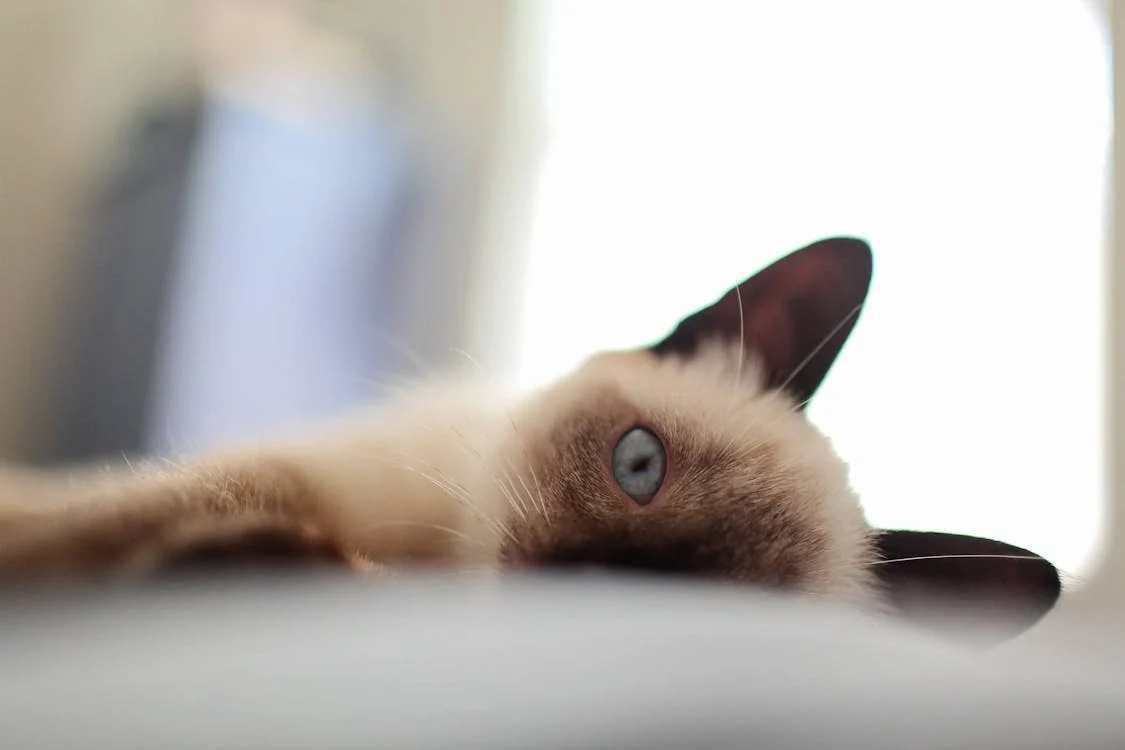Those mesmerizing blue eyes are undoubtedly one of the most striking features of Siamese cats. However, behind their captivating gaze lies a world of potential eye problems that every responsible owner should be aware of. From genetic predispositions to environmental factors, various issues can affect the vision and overall eye health of these feline beauties.
In this comprehensive guide, we’ll delve into the most common eye problems faced by Siamese cats, exploring their causes, symptoms, and the best practices for prevention and care. Buckle up, for this journey promises to be an eye-opening experience
Strabismus in Siamese Cats
One of the most well-known and often endearing traits of Siamese cats is their tendency to develop a cross-eyed appearance, known as strabismus. While this condition may seem harmless and even add to their quirky charm, it’s essential to understand its underlying causes and potential implications.
Strabismus in Siamese cats can be caused by various factors, including genetic predispositions, developmental abnormalities, or even injuries. In some cases, it may be a temporary condition that resolves on its own as the cat matures. However, in other instances, it can be a persistent issue that requires medical intervention.
While strabismus itself may not directly impair a cat’s vision, it can sometimes be a symptom of more serious underlying conditions, such as neurological disorders or eye muscle abnormalities. Therefore, it’s crucial to have your Siamese cat examined by a veterinary ophthalmologist to rule out any potential complications.
Progressive Retinal Atrophy (PRA) in Siamese Cats
Progressive retinal atrophy (PRA) is a genetic condition that can have devastating consequences for a Siamese cat’s vision. This inherited disorder causes a gradual deterioration of the retina, the light-sensitive tissue at the back of the eye responsible for converting light into electrical signals that the brain can interpret.
The first signs of PRA in Siamese cats typically appear between the ages of 1 and 2.5 years, with night blindness being the initial symptom. As the condition progresses, the cat’s vision gradually deteriorates until complete blindness sets in, usually within two to four years.
Unfortunately, there is no cure for PRA, and the condition is irreversible. However, early detection and proper management can help improve the quality of life for affected cats.
Nystagmus in Siamese Cats
Nystagmus is another eye condition that is relatively common in Siamese cats. This condition is characterized by involuntary, rhythmic movements of the eyes, which can appear as a rapid side-to-side or circular motion.
While nystagmus itself may not directly impair vision, it can be a symptom of underlying neurological or vestibular (balance) disorders. In some cases, it may also be a congenital condition, present from birth due to genetic factors.
Interestingly, many Siamese cats with nystagmus do not seem to experience any discomfort or significant impact on their vision. Their brains often adapt to the condition, compensating for the “extra” visual information and reconstructing a clear image.
Cataracts in Siamese Cats
Cataracts are another eye condition that can affect Siamese cats, causing a clouding or opacity of the lens within the eye. This clouding can impair vision by obstructing the passage of light to the retina, leading to varying degrees of vision loss.
In Siamese cats, cataracts can be congenital (present from birth) or acquired later in life due to various factors, such as trauma, inflammation, or underlying health conditions like diabetes.
While cataracts can be treated through surgical removal of the affected lens, the procedure is not without risks and can be costly. Early detection and regular eye examinations are crucial for monitoring the progression of cataracts and determining the most appropriate course of action.

Glaucoma in Siamese Cats
Glaucoma is a serious eye condition that can lead to vision loss and even blindness if left untreated. This condition is characterized by an increase in intraocular pressure (IOP) within the eye, which can damage the optic nerve and retina over time.
In Siamese cats, glaucoma can be inherited or acquired due to various factors, such as eye injuries, inflammation, or other underlying health conditions. Symptoms of glaucoma may include cloudy or red eyes, excessive tearing, and squinting or eye discomfort.
While glaucoma cannot be cured, it can be managed through various treatments, including eye drops, medications, and surgical interventions. Early detection and prompt treatment are crucial to preserving vision and preventing further damage to the eye.
Epiphora in Siamese Cats
Epiphora, or excessive tearing, is a common issue faced by many Siamese cats. This condition can lead to unsightly tear stains around the eyes, as well as potential skin irritation and infections if left untreated.
Epiphora in Siamese cats can be caused by a variety of factors, including blocked tear ducts, eye infections, allergies, or even environmental irritants. In some cases, it may also be a symptom of an underlying health condition, such as feline herpesvirus or conjunctivitis.
Addressing epiphora often involves identifying and treating the underlying cause, as well as implementing proper eye hygiene practices. This may include using eye wipes or saline solutions to gently clean the area around the eyes and prevent further staining or irritation.
Preventive Care: Keeping Your Siamese Cat’s Eyes Healthy
To ensure the best possible eye health for your Siamese cat, preventive care is essential. Regular veterinary check-ups can help detect potential eye problems early, allowing for prompt treatment and better management of the condition. Additionally, maintaining a balanced diet rich in essential nutrients, such as taurine, can support overall eye health and potentially reduce the risk of certain eye problems.
Treatment Options: Addressing Eye Issues
When it comes to treating eye problems in Siamese cats, the approach varies depending on the specific condition. For conditions like PRA and glaucoma, there are no definitive cures, but various management strategies can help slow the progression and improve the cat’s quality of life. These may include medication, surgical interventions, or even lifestyle modifications.
In the case of strabismus and nystagmus, treatment is often unnecessary unless the condition is causing discomfort or impacting the cat’s vision. However, if an underlying issue is identified, appropriate treatment will be recommended by your veterinarian.
Conclusion
Siamese cats are truly captivating felines, and their unique genetic makeup contributes to their distinctive appearance and personality. However, it’s essential to be aware of the potential eye problems that can arise and take proactive measures to ensure their well-being. By understanding the common eye issues, implementing preventive care strategies, and seeking prompt veterinary attention when needed, you can provide your Siamese cat with the best possible care and quality of life.
